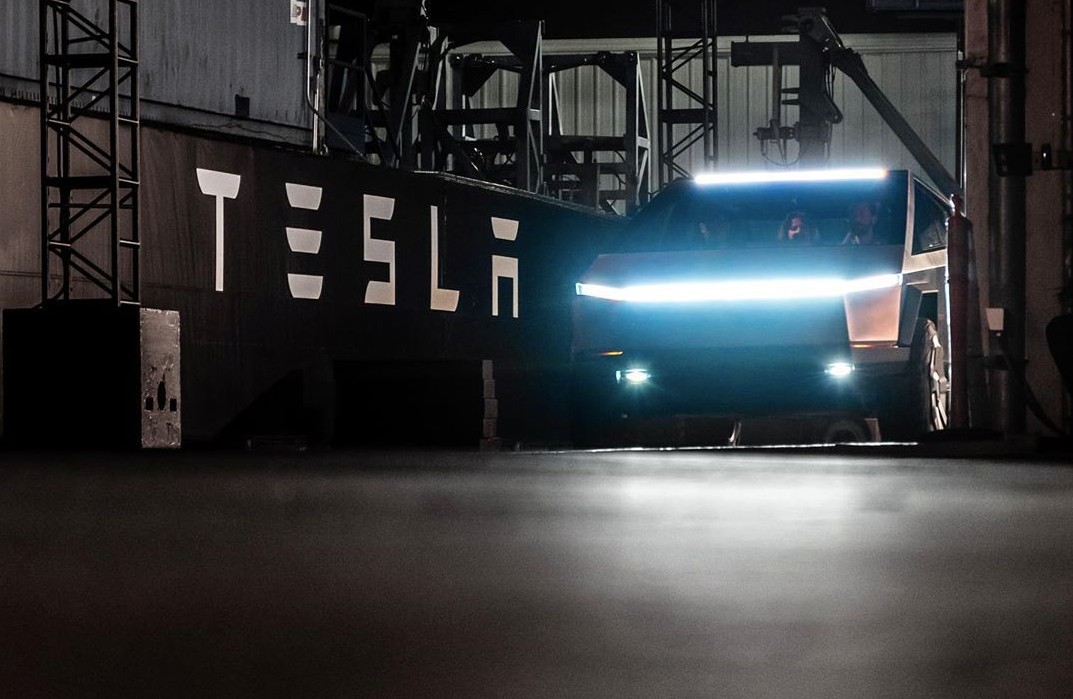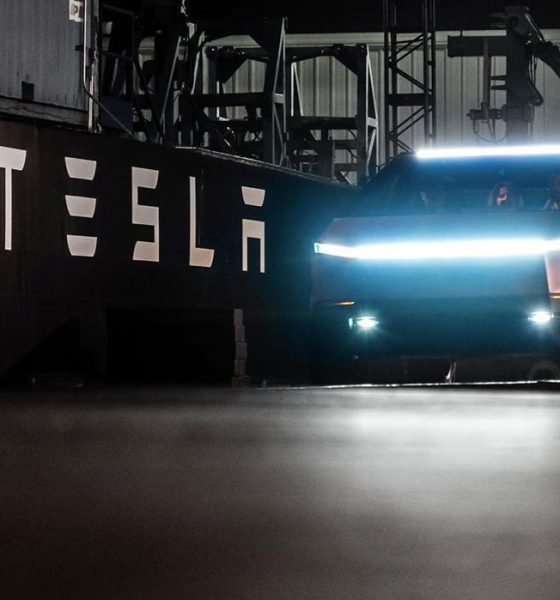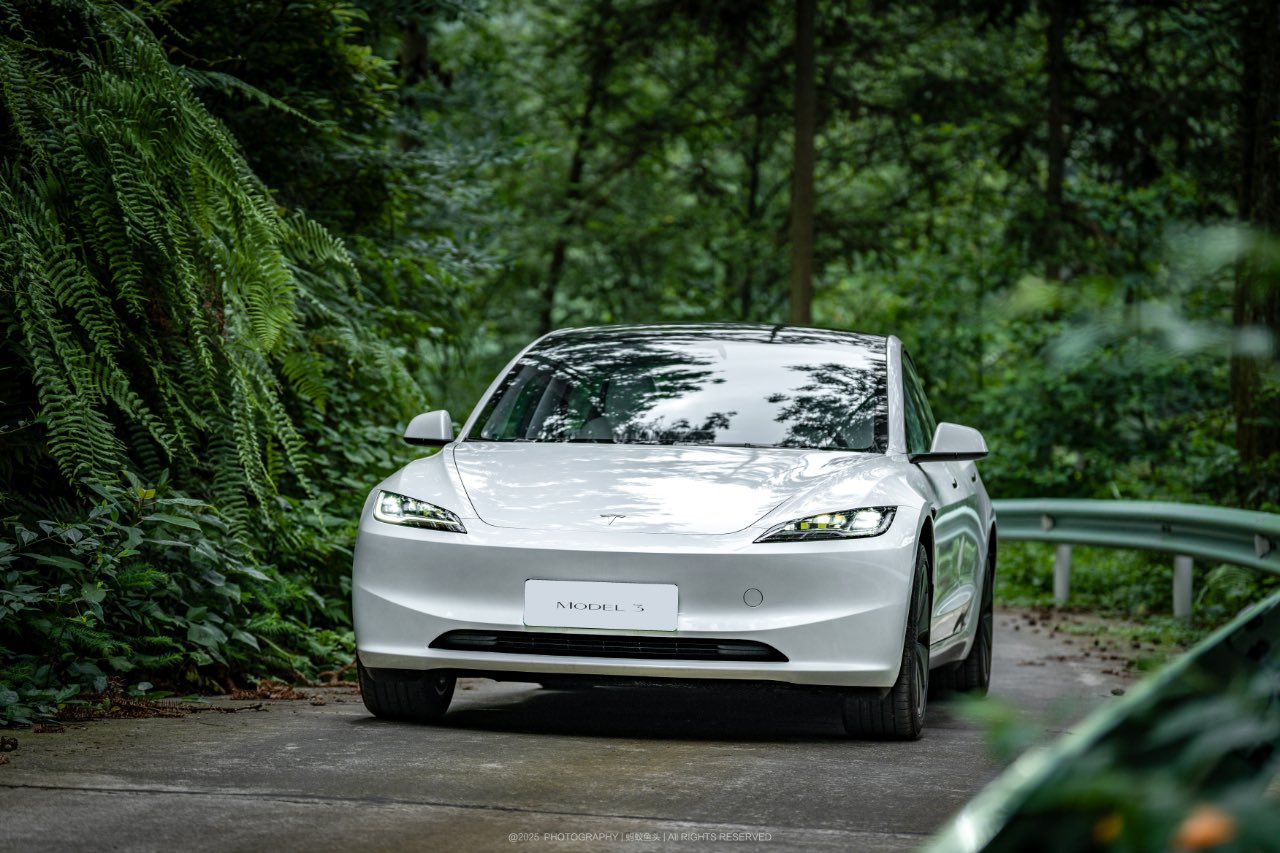

News
Tesla Cybertruck’s ‘V4′ charging hints at Plaid Model S’ monster peak charge rate
During the Tesla Cybertruck’s unveiling last November, CEO Elon Musk subtly commented that the all-electric pickup would be capable of charging at more than 250 kW. Musk did not disclose any other details about the Cybertruck’s possible “V4” Supercharging support, though the innovations that make it possible may very well be tailor-fit for the company’s next-generation of vehicles like the Plaid Model S and Plaid Model X.
The mention of the Cybertruck’s peak charge rate came at the latter part of the vehicle’s unveiling. Unfortunately, Elon Musk was already a bit shaken then due to the vehicle’s failed Armor Glass demonstration. Thus, the CEO’s mention of the key feature almost sounded like an afterthought, with Musk simply stating that the Cybertruck will “be capable of more than 250 kW.” He also mentioned that Tesla will “reveal the actual number later.”
In a way, an improved peak charge rate for the Cybertruck that goes beyond 250 kW is very well within character for the electric car maker. Tesla, after all, appears to be in the habit of introducing upgraded charging systems with every generation of its vehicles. The company’s first and second-generation 120 kW Superchargers were rolled out alongside the ramp of the Model S and Model X, and the 250 kW Supercharger V3 was introduced to support the ramp of the higher volume Model 3 and the Model Y.
With this in mind, there seems to be a pretty good chance that Tesla is preparing “V4” Superchargers for its next generation of vehicles. Tesla’s coming electric cars are expected to have the company’s best and possibly largest battery packs to date, after all, as represented by the Plaid Model S, Plaid Model X, Cybertruck, and perhaps even the Semi. Considering Tesla’s pace of innovation, it may not be surprising if the company’s peak charge rate for the Cybertruck, Plaid Model S, and Plaid Model X ends up being on par or higher than 350 kW.
This who have followed Elon Musk’s tweets over the past years would remember a post back in December 2016 when the CEO mentioned that a peak charge rate of 350 kW was more akin to a “children’s toy.” Musk’s statement may simply be a playful jab at the 350 kW peak charge rates of other charging networks, such as IONITY in Europe and Electrify America, but it does hint that the electric car maker is considering the introduction of a charging system that peaks beyond 350 kW. Since very few vehicles today like the Porsche Taycan are capable of supporting 350 kW charging, a “V4” Supercharger that goes beyond 350 kW would allow Tesla to leapfrog its competitors once more.
Such a strategy is actually well within character for the electric car maker, seeing as the company also has a tendency to give competitors a short-lived edge before leapfrogging them. This was the case with the Taycan’s track capability, which was designed to overcome and crush the capabilities of the Model S. Following the Taycan’s unofficial record run at the Nurburgring, Elon Musk announced that the flagship Tesla sedan was taking on the notorious track too, and sure enough, the Plaid Model S completely walked over the Taycan’s unofficial record.
That being said, and with Tesla’s tendency to innovate in mind, it appears safe to assume that the current V3 Superchargers still have a long way to go. The 250 kW chargers are still quite early in their rollout, and thus, Tesla is almost certain to upgrade them and increase their peak charge capabilities in the future. That was the strategy that the company adopted for its V2 Superchargers, which could now charge up to 150 kW. Regardless of whether the Cybertruck’s over 250 kW peak charge rate is due to a “V4” or an upgraded V3 Supercharger, however, there is very little doubt that the next generation of EV fast chargers will be dominated by Tesla once more.

News
Another Tesla Model 3 variant sold out for January 2026 in China
A look at Tesla China’s order page shows that new Model 3 LR RWD orders now have an estimated delivery date of February 2026.

Another Tesla Model 3 variant in China appears to have sold out for January 2026, with the vehicle now showing an estimated delivery date of February 2026 for new orders. This bodes well for the all-electric sedan, which has maintained notable sales despite more affordable rivals like the Xiaomi SU7 and its crossover sibling, the Model Y.
Model 3 LR RWD joins February 2026 queue
A look at Tesla China’s order page for the all-electric sedan shows that new Model 3 Long Range Rear Wheel Drive orders now have an estimated delivery date of February 2026. Priced from RMB 259,500 ($36,810), the LR RWD sits as the second-lowest-priced trim in Tesla China’s four-variant Model 3 lineup. The move follows a similar delivery timeframe for the Model 3 Performance, which remains the most expensive option for the vehicle, as noted in a CNEV Post report.
The estimated delivery dates of the two remaining Model 3 variants remain unchanged for now. The base RWD version, starting at RMB 235,500, and the LR AWD variant, priced from RMB 285,500, both continue to list estimated delivery times of 4-6 weeks. Tesla China, for its part, has continued to list in-stock Model 3 vehicles and is actively encouraging buyers to select inventory units for delivery before the end of the year.
Model Y delays and policy shifts
Delivery timelines for the Model Y in China are also stretching into 2026. All customized Model Y variants now show February 2026 as their estimated delivery date, except for the entry-level version, which still lists January 2026. Tesla has been urging customers since November to prioritize purchasing inventory vehicles, a push aimed at maximizing year-end deliveries.
Timing matters for Chinese buyers due to upcoming changes in government incentives. China’s new energy vehicle purchase tax exemption will be scaled back in 2026, which means customers who take delivery next year could face higher tax costs compared to those who are able to receive vehicles before the end of the year.
As per data from the China Passenger Car Association, Tesla recorded retail sales of 73,145 vehicles in November, down 0.47% year over year. From January through November, Tesla’s retail sales in China totaled 531,855 units, a 7.37% year-over-year drop.
News
Wedbush’s Dan Ives sees ‘monster year’ ahead for Tesla amid AI push
In a post on X, the analyst stated that the electric vehicle maker could hit a $3 trillion market cap by the end of 2026 in a bullish scenario.

Wedbush analyst Dan Ives is doubling down on Tesla’s (NASDAQ:TSLA) long-term upside. In a post on X, the analyst stated that the electric vehicle maker could hit a $3 trillion market cap by the end of 2026 in a bullish scenario, thanks to the company’s efforts to develop and push its artificial intelligence programs.
An aggressive valuation upside
Ives, Wedbush’s global head of tech research, stated in his post that Tesla is entering a pivotal period as its autonomy and robotics ambitions move closer to commercialization. He expects Tesla’s market cap to reach $2 trillion in 2026, representing roughly 33% upside from current levels, with a bull case up to a $3 trillion market cap by year-end.
Overall, Ives noted that 2026 could become a “monster year” for TSLA. “Heading into 2026, this marks a monster year ahead for Tesla/Musk as the autonomous and robotics chapter begins. We believe Tesla hits a $2 trillion market cap in 2026 and in a bull case scenario $3 trillion by end of 2026… as the AI chapter takes hold at TSLA,” the analyst wrote.
Ives also reiterated his “Outperform” rating on TSLA stock, as well as his $600 per share price target.
Unsupervised Full-Self Driving tests
Fueling optimism is Tesla’s recent autonomous vehicle testing in Austin, Texas. Over the weekend, at least two Tesla Model Ys were spotted driving on public roads without a safety monitor or any other occupants. CEO Elon Musk later confirmed the footage of one of the vehicles on X, writing in a post that “testing is underway with no occupant in the car.”
It remains unclear whether the vehicle was supported by chase cars or remote monitoring, and Tesla has not disclosed how many vehicles are involved. That being said, Elon Musk stated a week ago that Tesla would be removing its Safety Monitors from its vehicles “within the next three weeks.” Based on the driverless vehicles’ sightings so far, it appears that Musk’s estimate may be right on the mark, at least for now.
News
Production-ready Tesla Cybercab hits showroom floor in San Jose
Tesla has implemented subtle but significant updates to both the Cybercab’s exterior and interior elements.

Tesla has showcased what appears to be a near-production-ready Cybercab at its Santana Row showroom in San Jose, California, giving visitors the closest look yet at the autonomous two-seater’s refined design.
Based on photos of the near-production-ready vehicle, the electric vehicle maker has implemented subtle but significant updates to both the Cybercab’s exterior and interior elements, making the vehicle look more polished and seemingly more comfortable than its prototypes from last year.
Exterior and interior refinements
The updated Cybercab, whose photos were initially shared by Tesla advocate Nic Cruz Patane, now features a new frameless window design, an extended bottom splitter on the front bumper, and a slightly updated rear hatch. It also includes a production-spec front lightbar with integrated headlights, new wheel covers, and a license plate bracket.
Notably, the vehicle now has two windshield wipers instead of the prototype’s single unit, along with powered door struts, seemingly for smoother opening of its butterfly doors. Inside, the Cybercab now sports what appears to be a redesigned dash and door panels, updated carpet material, and slightly refined seat cushions with new center cupholders. Its legroom seems to have gotten slightly larger as well.
Cybercab sightings
Sightings of the updated Cybercab have been abundant in recent months. At the end of October, the Tesla AI team teased some of the autonomous two-seater’s updates after it showed a photo of the vehicle being driven through an In-N-Out drive-through by employees in Halloween costumes. The photos of the Cybercab were fun, but they were significant, with longtime Tesla watchers noting that the company has a tradition of driving its prototypes through the fast food chain’s drive-throughs.
Even at the time, Tesla enthusiasts noticed that the Cybercab had received some design changes, such as segmented DRLs and headlamps, actual turn signals, and a splitter that’s a lot sharper. Larger door openings, which now seem to have been teasing the vehicle’s updated cabin, were also observed at the time.








